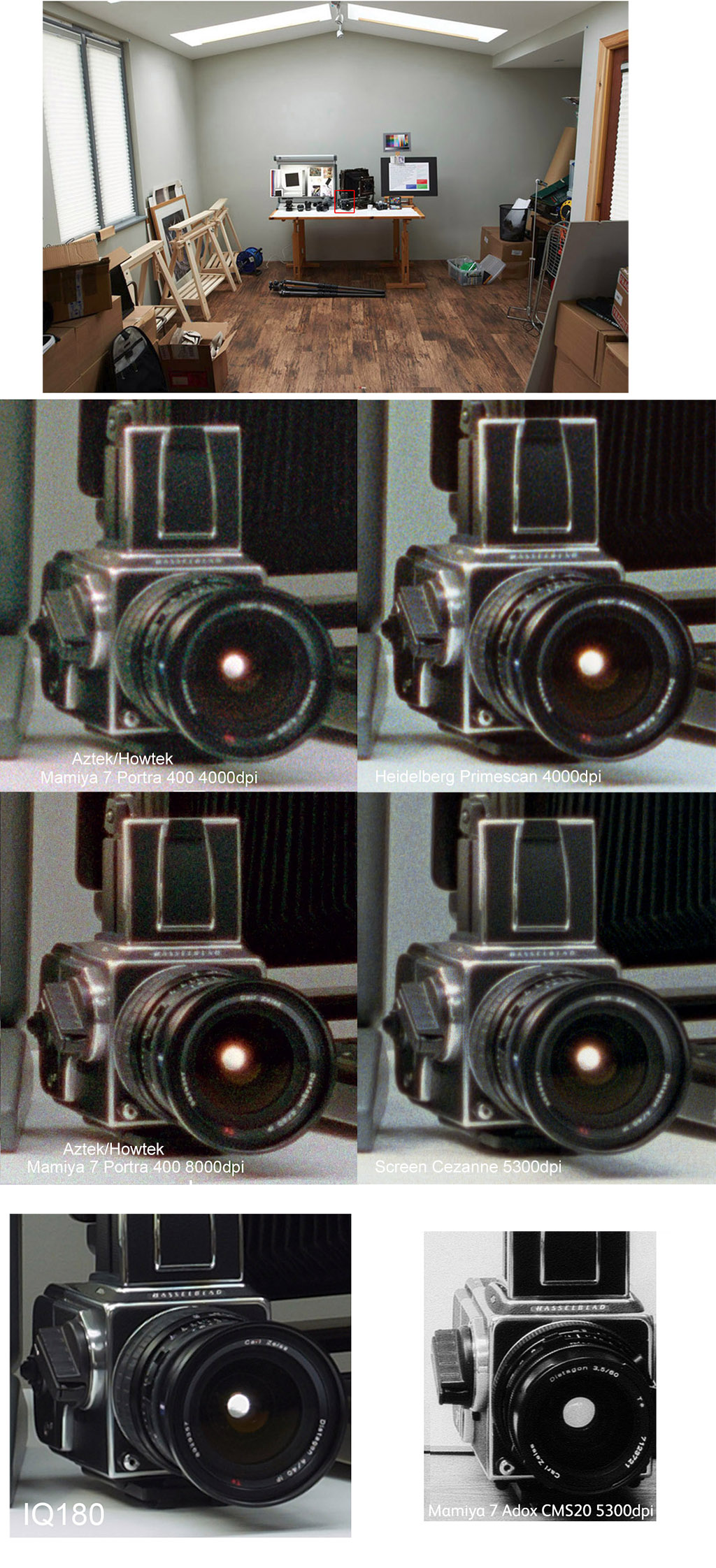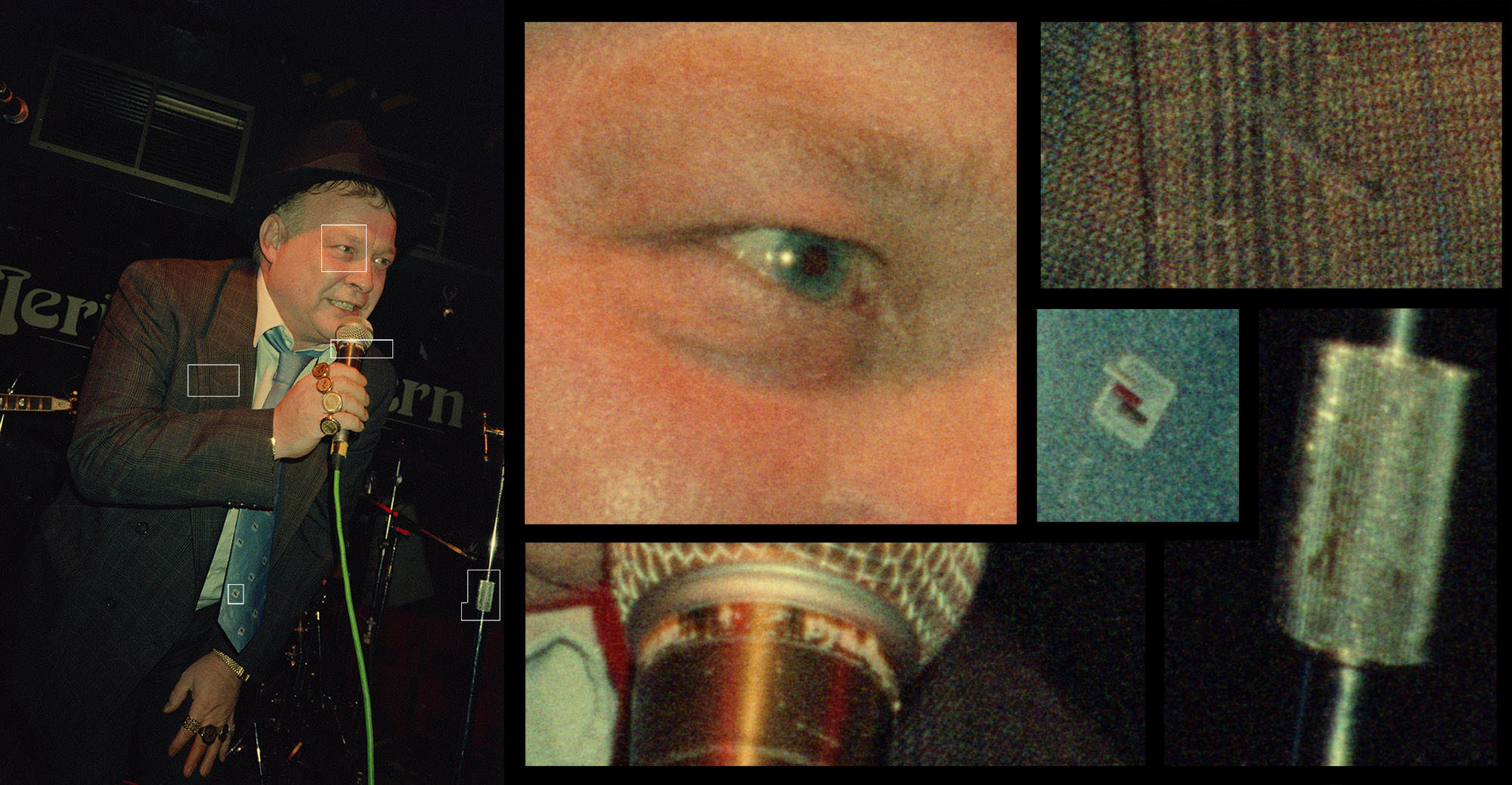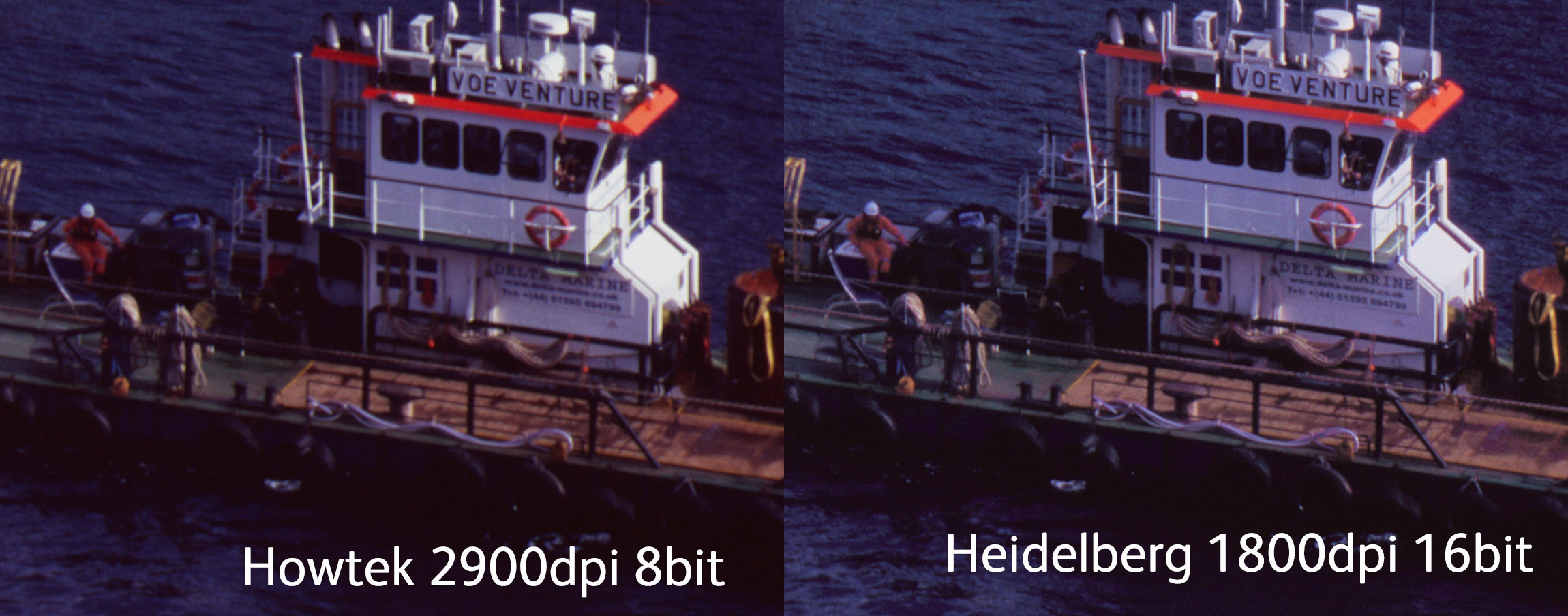
Resolution
Drum scanners allow the highest resolution scans of colour and black and white film. Manufacturers say they can achieve up to 11,000dpi for the very high end models (but we’ve tested most and the limit seems to be about 6000dpi for real film). However, with higher resolutions we get diminishing returns. We’ve tested 35mm, medium format and large format (5×4 and 10×8), and have found that there is almost nothing gained above 5000dpi (6000dpi for some 35mm) apart from a cleaner resolving of grain and for large format film shot at typical apertures, there is usually little benefit of scanning past 3000dpi (unless you’re shooting at f/22 or below with good lenses and technique). In fact Kodak just reformulated their Portra and Ektar films to optimise them for scanning – they did so by reducing the sharpness and resolution in order to give smoother scans.
It should be remembered that even a 2,000dpi scan from a drum scanner will be sharper and have less noise than a 2,000dpi scan from an Epson, Imacon or equivalent non-drum scanners. This is because of the minimal use of optics in the scanning path (no long optical path mirrors) and the accuracy of construction of the scanner. It should be remembered that these drum scanners originally cost the price of a small house, and it shows in the engineering – we have nearly a ton of scanners in our studio!).
Testing with large & medium format cameras
We have done extensive testing in the field with large format cameras and with some very sharp transparencies taken on Velvia 50 using apertures of f/22 and above (large format) and find it very difficult to see the difference between a 2000dpi uprezzed and a 4000dpi scan in a print, impossible with 3000dpi. If you have a system with very sharp lenses, good registration and an aperture wider than f/22 you may get some improvement from a 3000 (or potentially, with perfect technique and conditions, a 4000dpi scan))
Medium format film (and 35mm film) is typically taken at larger apertures than large format and hence are not limited by diffraction in the same way. We recommended 5000dpi as an optimum resolution for MF film and 6000dpi for 35mm film.
There is an advantage of scanning at higher resolutions but it mostly comes down to perceived ‘noise/grain’. Some scanners that can achieve 6,000+ dpi scanning Portra 400 produce results that have very smooth grain and yet when scanned at normal resolutions the grain becomes more intrusive. The grain interacts with sharpening in very strange ways also.
Here’s a few samples of our scanner results, firstly a comparison of a few scanners we tested whilst choosing our equipment. It’s great to see very high-resolution scans but unless you want to deal with >2Gb files then it’s more important to see how the scanner performs at around 4000dpi. Below you can see the Howtek/Aztek at 8000 and the Screen Cezanne at 5300 but we’ve also included the Aztek/Howtek at 4000 and show our Heidelberg at 4000 as well.
We’ve included an IQ180 and Mamiya 7 with Microfilm scan at the bottom just because we thought you’d find it interesting to see the ‘limits’ of film & digital. Click on the images for a full view.
NB: Aztek Premiere and Heidelberg Primescan are at different resolutions.
Here’s a best scan of a 6×6 Portra 160. (Copyright Samuel Pidgen)
And a scan of 35mm Superia 1600 on our Heidelberg Primescan 8400
Different scanners can have very different results at the same resolution. Comparing results from a Howtek 4500 with our new Heidelberg Primescan 8400 when scanning an 8×10 transparency, it was very clear that the Primescan was getting better results at lower resolutions than the Howtek. This is why you should take specifications with a big pinch of salt. Here is a sample comparison.
Here is an example of one of my own landscape photographs taken on 5×4 and scanned on our Heidelberg Primescan at 4000dpi





